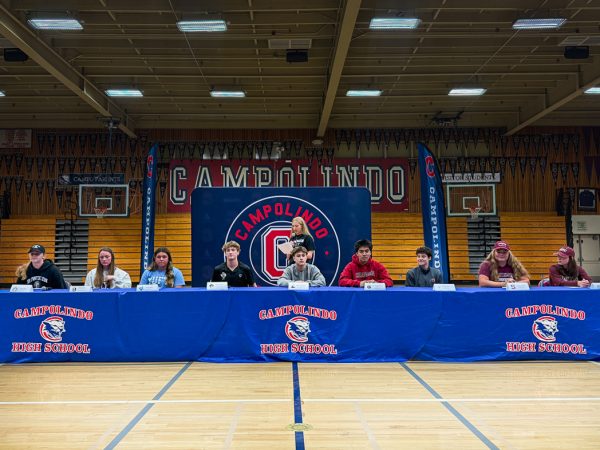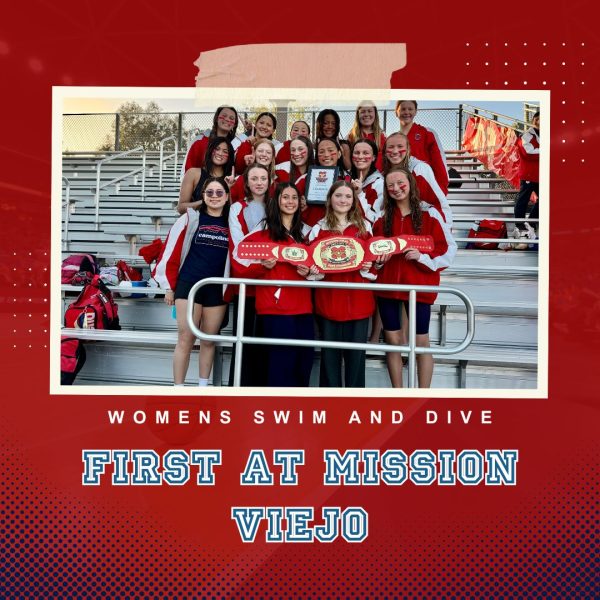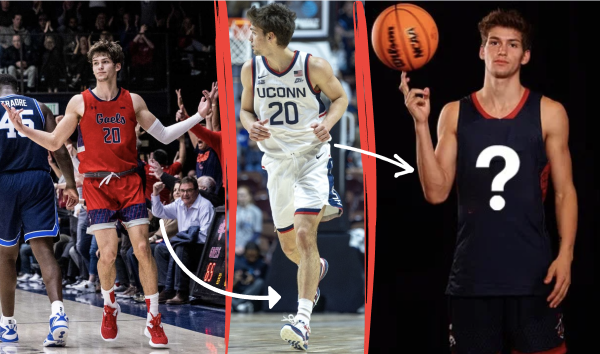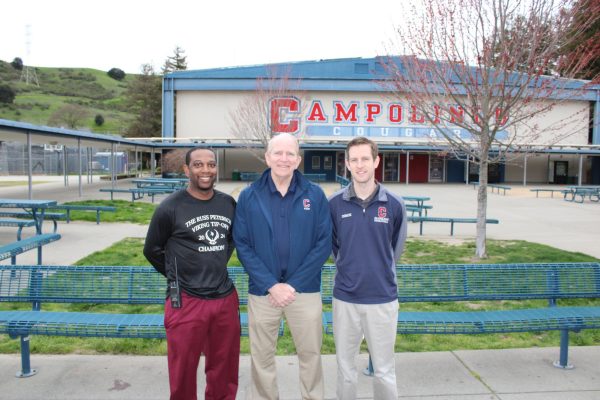Campo Exhibits Gender Bias In Sports
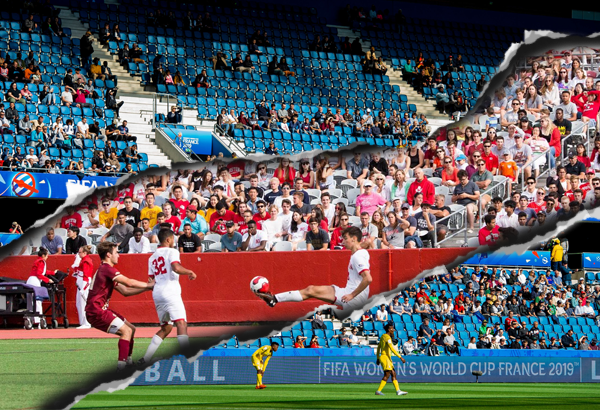
Attendance discrepancy between male and female sports stretches all the way up to professional leagues.
For those who have ever been to a Campo sport that has a male and female team, it’s hard to not observe the major difference between the amount of fans in the stands. Not because 1 gender is better than the other, but because many students tend to associate certain sports with 1 gender, which leaves the other with less of an audience and less deserved attention.
Varsity boys’ and girls’ basketball is a clear demonstrator of this. At any 1 of the boys basketball games, the stands are completely packed on both sides, with a heated, excited atmosphere. However, for those who do show up to support and cheer on the girls’ basketball team, the fans are few and far between. Boys’ basketball players’ fans print the players’ heads on sticks which the crowd waves around widely, while girls may get a measly hand drawn “Way to go!” sign from fans. There is no reason for there to be such an extreme difference between the 2.
Girls’ basketball player senior Natalie Barkey said, “There’s just no respect for girls, girl athletes especially. It’s frustrating, but I get it most of the time because people just aren’t excited by [girl’s basketball], because [they] think the level isn’t that high. It’s also hard at Campo because we don’t support the sports enough so there’s no players that actually come here…to play girl’s basketball. So then we’re less good, so obviously people don’t want to come because [the game] is just okay.”
Barkey added she wishes students would “[have] respect for girls that play a sport, because that’s my entire life. I think every girl athlete knows that their entire life, especially if we’re playing in a male dominated sport, you know that all girls that do not get half the respect as guys…When someone asks you what sport you play and say, ‘Oh, I play basketball.’ They’re gonna be like, ‘Oh, okay, so you’re not good.’ That’s my whole life. That’s the case.”
The rampant gender bias in Campo sports can also be illustrated in The Claw itself. This year, boys’ basketball was featured 4 times in photos and articles and girls’ basketball only was featured once – and it was only in an article about Senior Night, which covered multiple sports.
One could argue that differing win percentages is what contributed to the fan turnouts, but many of Campo’s boy’s basketball players and fans have attested in other articles that the crowd helps energize the athletes.
Varsity boys’ basketball player junior Clay Naffziger once said in an interview with The Claw, “It means a lot to us to have the gym filled up again and opposing fans and our fans just fire us up because when we hear energy, it gives us energy as well… It definitely helps us out a lot.”
Boys’ basketball fan senior Elijah Klock said in an interview with The Claw, “I think that cheering helps the athletes know that we still support you even though you’re down and that we’re still there. And we’re still getting rowdy and all that stuff.”
This is a prime example of how the crowd boosts the team. It’s unfair that other teams of the same sport aren’t able to get energy from the crowd because there is none.
Take varsity boys’ and girls’ volleyball as a more current example.
Freshman Vivian Wang attended several varsity girls and boys volleyball games and noted the differing crowd turnouts.
“Not as many people go to the boys volleyball games, because when you think about volleyball it’s more of what people will consider a girls’ sport compared to what would be a [stereotypical boys sport like] basketball or football,” said Wang.
Varsity boys’ volleyball player junior Diego Davila Gil commented on the small crowds at boys’ volleyball games. “We once got 2 [students] at our volleyball game, and that was considered a good turnout. Overall, lots of people in the audience are our parents…I think the reason that girls’ [volleyball] just gets more attention is because, relative to California, Campolindo girls’ volleyball program, the varsity program at least, is better frankly, than boys’ varsity. Obviously you want to go where it’s more competitive, where they’re playing at a higher level relative to the other team.”
Davila Gil attributes the differing crowd amounts to several factors. “A lot of people on the girls’ varsity team, I find that they’ve been playing since forever [whereas] a lot of people on the boys’ varsity team, there are people that just started this year. So [gender bias] affects [sports] in that way. And so I think when you hear ‘boys’ volleyball’, you don’t know what to expect so you’re just not going to show up. Meanwhile, when you hear ‘girls’ volleyball,’ you already have an idea of what you’re going to come for and…you don’t have the ability to be thrown off.”
“I think more support for the boys’ volleyball [teams] would be actually really, really great because coming off of 2 years of COVID obviously and having a lot of people graduate and having a lot of newcomers, we need that support of knowing that our school is with us and I think that would be really amazing if more people turned out,” Davila Gil added.
Campo needs to start showing up to support all sports, no matter which gender team is playing.
Your donation will support the student journalists of Campolindo High School's The Claw. Your contribution will allow us to produce more issues and cover our annual website hosting costs.

Senior Maggie Doolittle has been a Girl Scout since kindergarten, racking up a total of 11 years in her troop. "I have continued [Girl Scouts] because...

